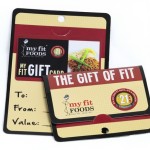Understanding Plastic Card Personalization & Fulfillment
For Some customers, a printed card is their final product. For others, it’s just the beginning of a personalization process that turns a common 30 mil pvc card into a unique information storage device.
Card personalization and fulfillment can be as basic as magnetic stripe encoding or as comprehensive as carrier customization, marketing material insertion, and mailing. When this level of service is required, it’s typically more cost-effective for businesses to outsource. Why? Because the investment in equipment and staffing required to bring these processes in house is almost always cost prohibitive. Outsourcing your card personalization and fulfillment — even for basic services, such as magnetic stripe encoding — can save you valuable time and money.
What do we mean by “personalization and fulfillment?” Let’s take a look.
Personalization:
- Magnetic Stripe Encoding – Encoding identification data onto a card, allowing for use with a point-of-sale system.
- Printing Variable Data – Unique surface printed information, including bar codes, serial numbers, member numbers or other information.
- Scratch-Off Panels – To hide activation codes and other data for fraud protection.
- Custom Carriers – Carriers are the cardboard backers often used to display gift cards. They sometimes double as gift card envelopes. Carriers can be custom designed to your specifications, and can also include variable data.
- Post Cards & Mailers – Custom postcards, letters and envelopes can be produced to accompany your card for mailing.
Fulfillment:
- Addressing – Address printing.
- Affixing – Affixing cards to carriers, post cards or letters, matching card to address.
- Insertion – Insertion of letters, cards and other marketing materials into envelopes, matching card, letter and address.
- Mailing Services – Address verification, presort (when applicable), and mailing.
Plastek Cards works with member organizations, assisting them with their membership card personalization and and fulfillment, as well as with restaurants and retailers, who use our services to implement their gift card and loyalty card programs.




